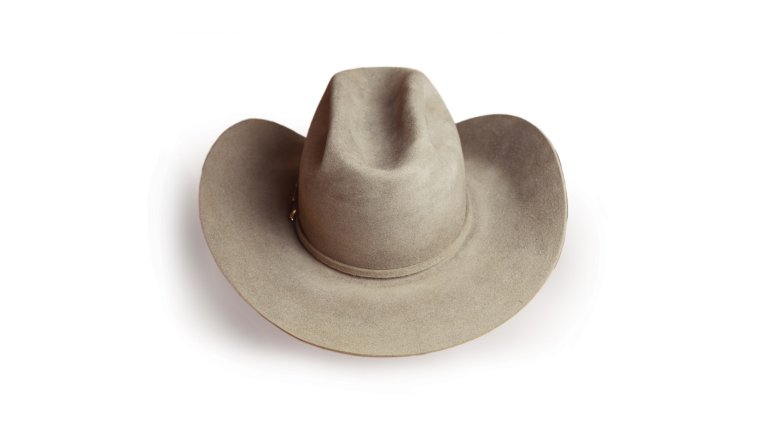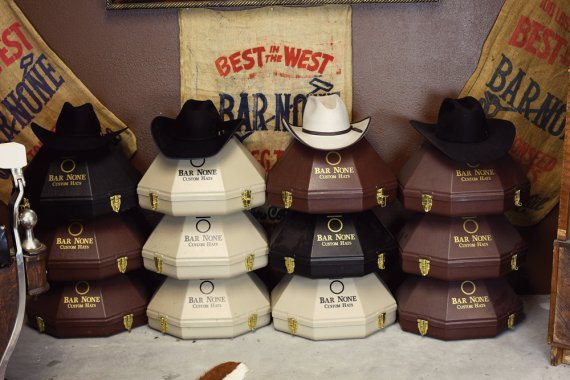Bar None Hat Company
Bar None Hat Company
As a sixth-generation cattle rancher, Kaycee Orr-Hoffman understands that a cowboy hat is much more than a fashion statement.
“For cowboys, it’s a tool,” she explains, gesturing toward a stack of unfinished hat bodies at Bar None Hat Company, her workshop and store in Thedford, a town of 218 residents in the Nebraska Sandhills. “It’s worn 365 days a year to keep your head protected from the sun, rain, and snow.”
Orr-Hoffman started exploring the craft in 2002 under the guidance of two of her aunts, both hatmakers. At the time, she was working an office job in her hometown of Greeley, Colorado, but was drawn to the idea of creating by hand something both practical and beautiful. Hoping to one day have a family – she and her husband, cattle rancher Jason Hoffman, met at the National Western Stock Show in 2005 and now have three children, ages 9, 7, and 5 – Orr-Hoffman also wanted to set herself up in a career that would give her the flexibility to be a stay-at-home mom.
The biggest challenge to starting her business was finding the right equipment. Precision hat making requires a conformateur, a measuring device that traces the exact shape of a person’s head. Invented in the 1800s, the tools are no longer manufactured and are tricky to find, so Orr-Hoffman says she made an agreement with God. “I decided that if I found a conformateur, it was a sign I was on the right path,” she says. A year later, she struck gold on eBay and started her business under the mentorship of her aunts.
The name Bar None Hat Company honors her family’s historic Colorado brand, which began operating in the late 1800s. Today, she sells about 100 hats per year, at prices that range between $350 and $900. The cost depends on the quality of the felt used for the hat body and on the hat band’s ornamentations, which range from plain buckle sets to pure gold buckles with a client’s brand or initials set in diamonds.
When creating a hat, Orr-Hoffman takes a variety of factors into account, including a person’s head shape, skin tone, hair color, and even personality. She estimates that each hat takes eight to 10 hours spread out over a three-day period to complete. Orr-Hoffman does everything herself: sanding down the felt, ironing the crown, hand-sewing the sweatband, and stamping the wearer’s name into it with a hot foil machine.
As a finishing touch, the hatmaker lines every piece with purple satin, the ribbon color of cattle show champions and her grandfather’s favorite color. Then she tucks a $2 bill into the band, a good-luck gesture that she learned from a customer.
Orr-Hoffman spots her creations on ranches and when she attends cattle industry events. Several customers have even told her they are going to be buried wearing their Bar None hats.
“Each hat that goes out the door has a piece of me that goes with it,” she says. “I love creating something with my hands. When you’ve created it and see it on someone’s head, it’s pretty cool.”
Hat Tips
Gold standard: Bar None hats are made with rabbit or preferably beaver felt; the latter is a naturally water-repellent material.
Crease is the word: The crease in your cowboy hat says a lot about who you are. In the Sandhills, the most popular shape is the cattleman’s crease – a divot flanked by two long troughs. The buckaroo style – round top, wide brim – is popular in Nevada. A “gus” crease narrows toward the front of the hat and is favored in Montana.
Hats off: Always remove your hat by the crown. Then lay it upside down on the crown so that no part of the brim touches the surface. This minimizes the stress on the brim and will help the hat hold its shape. Also, never lay your cowboy hat on a bed – it’s bad luck.




